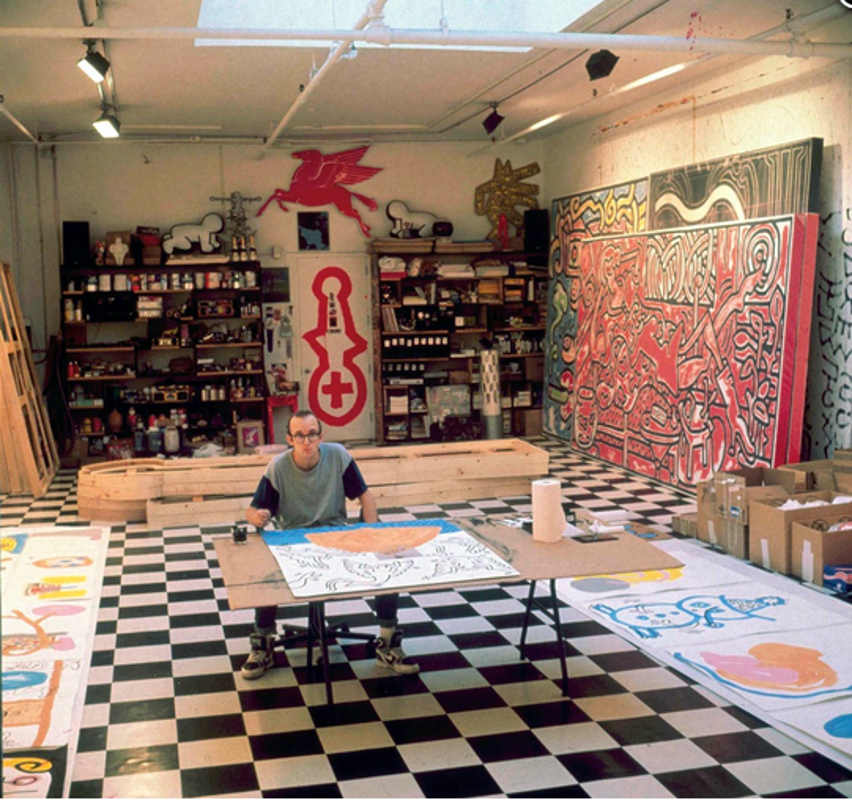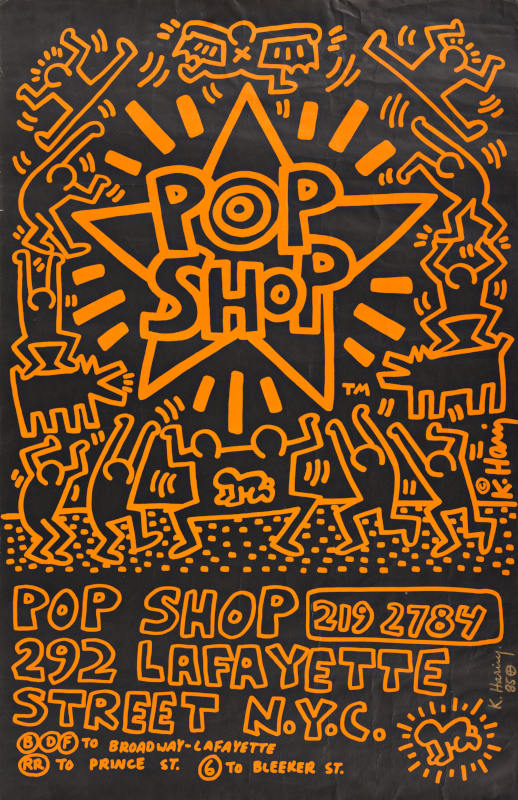
Keith Haring Studio & Foundation
overview
The artist Keith Haring worked in a fifth-floor studio in this building from 1985 to 1990, the last five years of his life before dying of AIDS.
In this time period, he opened Pop Shop in Soho and created many notable artworks that have come to define his impact on the international alternative art scenes of the 1980s.
History
Iconic 1980s artist Keith Haring (1958-1990) first came to New York in 1978 to attend the School of Visual Arts (SVA) and was quickly influenced by the city’s alternative art scene that was emerging in unconventional places, such as on the streets and in clubs. From 1980 to 1985, Haring became known for hundreds of public drawings he created in the subway system. His first solo exhibition was held at Westbeth in 1981.
With his art already receiving international recognition, Haring began working in a fifth-floor studio at 676 Broadway in 1985. It would remain his workspace until his death from AIDS-related complications five years later.
During this period, he created pieces in support of gay rights and for the fight against AIDS. He also created numerous murals around the world. Those still extant in New York City include his now-famous Crack is Wack mural (1986) off the Harlem River Drive; interior murals (1986) in Brooklyn’s Woodhull Hospital; the Carmine Street Mural (1987) outside what is now the Tony Dapolito Recreation Center; and the Once Upon a Time mural (1989) in the second floor men’s bathroom at the Lesbian and Gay Community Services Center (now the LGBT Community Center).
Haring’s interest in making his art accessible to the public led to the opening of Pop Shop at 292 Lafayette Street in Soho in the spring of 1986.
I wanted to continue this same sort of communication as with the subway drawings. I wanted to attract the same wide range of people, and I wanted it to be a place where, yes, not only collectors could come, but also kids from the Bronx.
In 1989, a year after he was diagnosed with AIDS, he established the Keith Haring Foundation at this location. Although not open to the public, the foundation continues to shape Haring’s artistic legacy here as well as support children’s and AIDS charities.
Haring’s last address was his nearby residence at 542 LaGuardia Place in 1990. His funeral was held at the Cathedral of St. John the Divine in Morningside Heights, Manhattan.
Entry by Amanda Davis, project manager (March 2017).
NOTE: Names above in bold indicate LGBT people.
Building Information
- Architect or Builder: Detlef Lienau
- Year Built: 1873-74
Sources
“Bio,” “Murals Map,” and “Pop Shop,” The Keith Haring Foundation, bit.ly/1IFiddb. [source of pull quote]
Christopher D. Brazee, Gale Harris, and Jay Shockley, “Taking Pride: 150 Years of LGBT History,” New York City Landmarks Preservation Commission, 2015.
John Gruen, Keith Haring: The Authorized Biography (New York: Prentice Hall Press, 1991).
Do you have more information about this site?
This project is enriched by your participation! Do you have your own images of this site? Or a story to share? Would you like to suggest a different historic site?














